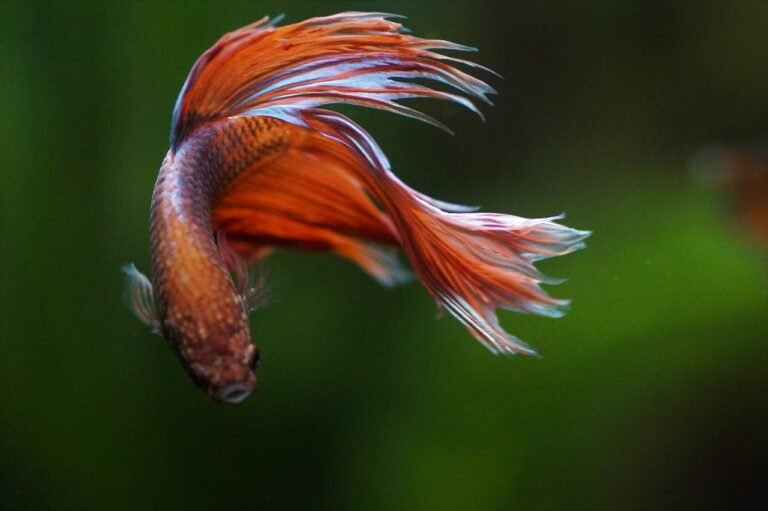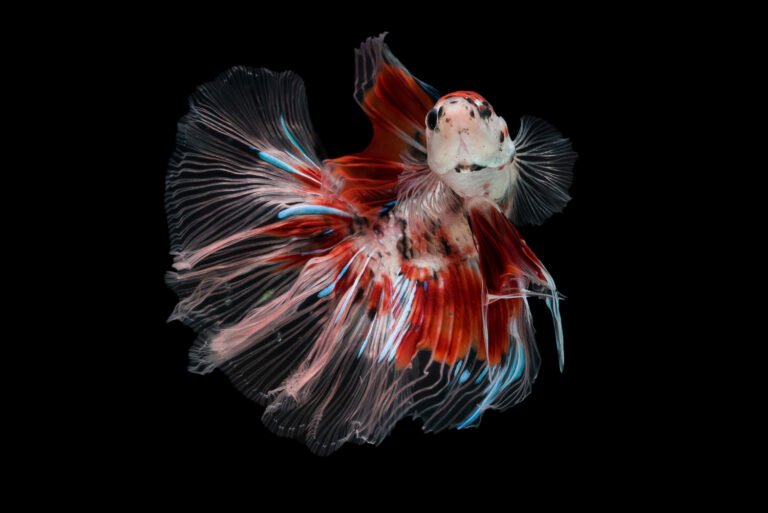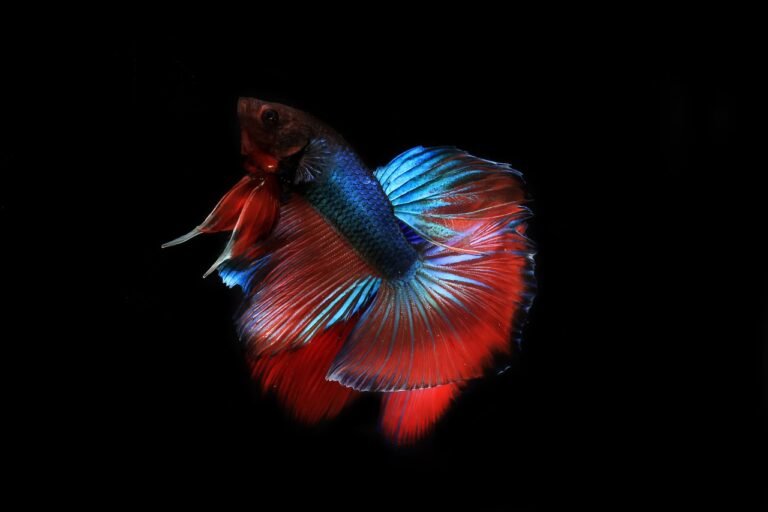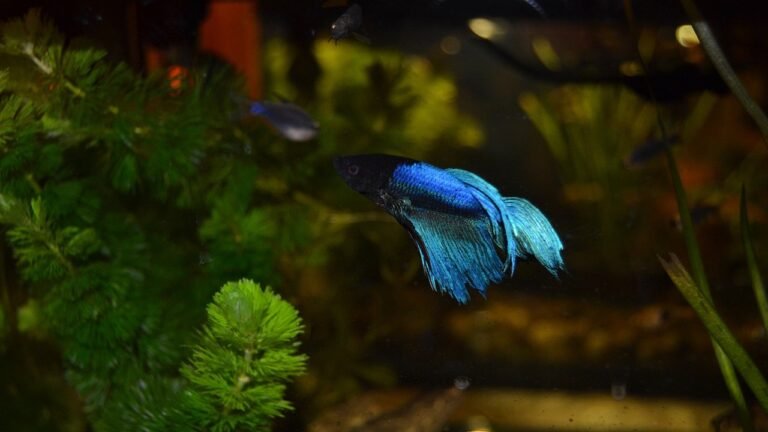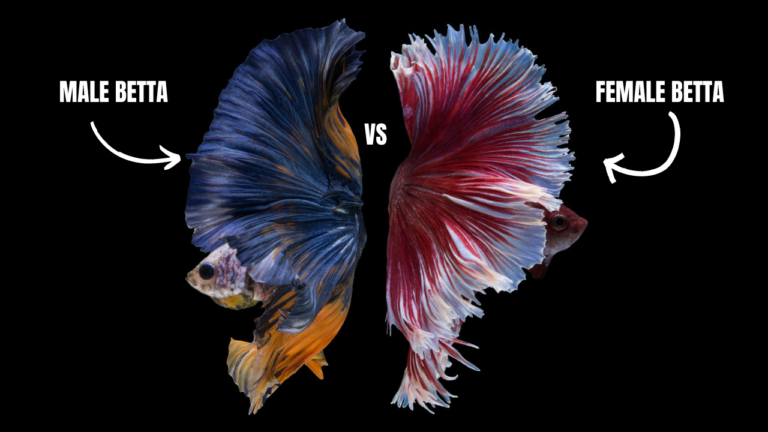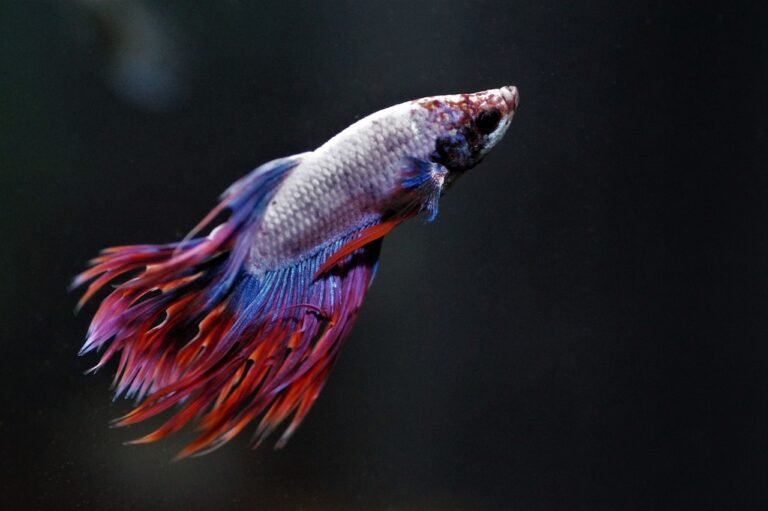As a lover of bettas, you are about to undertake a unique journey that will deepen your knowledge of these majestic creatures while revealing what lies behind their amazing variety.
fighting fish also called betta fish have always been admired because of their beauty and interesting characters. From the iconic crowntail to the elegant half-moon these aquatic wonders come in many different colors and shapes with fins each more beautiful than the last one.
But do you know what hides under those shiny scales? The secret is in betta’s genetic makeup that governs its appearance traits. Therefore, investigating into this area would not only increase your love for those captivating beings but also equip you with necessary skills needed as a breeder who can create his or her own miracles within bettas.
Genetics Behind Betta Fish Colors
Colors are determined by genes among other things in betta fish genetics which is at its core all about how various types or forms of colored pigments interact with light waves frequency changes resulting from scattering off different layers of skin cells containing such pigment granules like melanin particles reflecting back after entering them etc..
To understand fully chromatic beauty exhibited by these creatures one must first have a clear grasp on basic concepts relating to inheritance patterns regarding hues displayed by various species belonging under Betta genus category name [commonly known as “Siamese Fighting Fish”]. For instance; genes responsible for pigmentation control may involve those regulating production melanin or carotenoids synthesis pathways thus affecting final output colouration.
However this is just scratching the surface because underneath there lies complexity within complexity – modifier gene systems capable of either enhancing, diluting or even altering base coat colors thus giving rise not only an amazing variety but also patterns such as marble pattern types with spots on them which can be seen during different stages life cycle.
Different Types
Different breeds or varieties found within bettas exhibit unique genetic traits that set them apart from each other. This means as one continues breeding journey more will be revealed concerning body shapes, color combinations and finnage varieties among many other things inherent in these wonderful creatures’ DNA blueprint.
- Crowntail Bettas: These are characterized by their caudal fins which have ray extensions that make them look like crowns when viewed from behind hence the name “crowntail”. The genetics involved determine both finnage density, shape plus vibrant colors displayed on this part of a betta’s anatomy.
- Half-Moon Bettas: Graceful half-moon shaped tails resembling crescent moons give these bettas an elegant appearance. Genetic mechanisms control ratios between lengths, shapes and shades of various sections making up such fins thereby creating impressive displays filled with beauty during swimming sessions among other activities undertaken by these amazing fish.
- Plakat Bettas: Compact muscular bodies together with shorter fins enable plakats to move quickly through water thus being considered good swimmers. In addition, proportions unique to them including striking pigmentation patterns accentuating streamlined forms are dictated by specific sets of genes responsible for plakat morphology during development stages for instance stripes similar those found in tigers may appear on sides when they grow bigger .
- Elephant Ear Bettas : The large pectoral fins resemble elephant ears after which they were named. A combination of different genes leads into this type having that specific structure while still maintaining its attractive shape hence making it one among many wonders attributed to variations within Betta species
Art of Betta Fish Breeding
Breeding betta fish is a science as well as an art. It involves bringing together genetic principles and the breeder’s aesthetic sense with an aim for perfection. As you start on this thrilling journey, you will realize that every successful breeding project is actually your knowledge in betta fish genetics expressed through practice.
In order to achieve what you want, select mating pairs carefully based on compatibility and particular attributes that need to be fixed or improved upon through successive generations; also take into account their genetic composition vis-a-vis desired traits which should be passed on. From here it is all about creating the best conditions possible for spawning while ensuring good health of resulting fry through necessary care.
Throughout this process, understanding of genetics in relation to siamese fighting fish will serve as your compass enabling anticipation of various outcomes from different breeding attempts taken during the exercise. With each spawn being successful, magic happens because genes manifest themselves in new individuals who inherit past characters but embody future ideals too according to personal expectations.
How to Successfully Breed Betta Fish: Step-by-Step Guide
Breeding bettas can prove fulfilling if patience is exercised alongside paying attention towards finer details about what they require for survival. Follow these step by step guidelines confidently.
- Setting Up The Breeding Tank – Establish a dedicated breeding betta fish tank with appropriate water parameters such as temperature range, pH level among others that may affect their wellness negatively. Add some live plants into it so that there are hiding places and provide either mop or surface where females can lay eggs.
- Selecting And Conditioning Breeders – Healthy breeders should be selected based on vibrancy together with other desirable qualities indicative of good genes which one wants them to have passed over time within the population being bred from this moment henceforth. To ensure readiness for mating season feed them a high protein diet always until when ready to start.
- Introducing Breeders – Place male and female bettas in the same breeding tank while watching how they behave towards each other. Give them enough time to build a bubble nest for eggs laying purposes coupled with performing courtship dances around it.
- Spawning & Egg Care – Remove the female carefully once she has finished releasing her eggs so that she does not eat any of them. Keep an eye on the male’s ability to take care after fertilization ensuring appropriate conditions are maintained throughout their development stage.
- Caring For Fry – Use specialized food when feeding newly hatched fry since it contains necessary nutrients required at this initial phase while maintaining clean water for healthy growth. As they grow bigger introduce gradually larger meals but if aggression starts separating could be considered.
- Monitoring Record Keeping – Be observant during fry’s development noting down any unique features noticed which might have occurred due to environmental factors or genetic variations among others. Keep detailed records concerning previous trials as well as successes encountered during the breeding process for future reference.
Caring for Betta Fish Fry: Tips and Tricks
Taking care of betta fish fry can be both challenging and rewarding, however, it requires one to be patient, keen on details and appreciate their peculiar needs. Here are some important tips that will help you ensure proper growth and development of these delicate organisms:
- Water Quality: Cleanliness should never be compromised when dealing with these fragile lives thus making sure cleanliness is achieved by performing regular partial changes besides monitoring levels of ammonia/nitrites plus maintaining right temperatures and pH ranges.
- Feeding Regimen: Their diet must change according to age; hence start off using finely ground powder diets or liquid foods designed specifically for fries before switching over to newly hatched brine shrimps etc.
- Division and Extermination: As the young fish grow, it is important to isolate them into smaller numbers or individual tanks in order to avoid fighting and eating one another. In addition, culling weaker or deformed fry might be required to sustain the overall health and quality of the stock.
- Enrichment and Stimulation: Foster an enriching environment for your fry by adding live plants, hiding places, and gentle water flow. This will encourage their natural behavior and support healthy growth.
- Record Keeping: Keep detailed records of growth rates, feeding times, water quality parameters such as ammonia levels or pH values as well as any other significant observations about them during this stage. These notes could come in handy for future breeding projects you may undertake or simply help improve on your current methods.
Advanced Techniques in Breeding
Once have become well skilled experienced in betting fish there few advanced methods that could help take your knowledge higher levels; these will require deep knowledge about genetics continuous learning:
- Inbreeding Or Line-breeding: This is a technique where individuals within the same family line are mated together to reinforce certain traits which might be common among them thus creating a more stable gene pool over time provided careful records kept track of the most important thing here being understanding various genetic principles involved.
- Outcrossing: Here unrelated fish from different strains lines allowed each other to introduce new blood into existing populations this way it becomes possible to unlock unique colorations patterns finnage variations never seen before hence making breeding more fun, exciting as well challenging too.
- Selective Crosses: Through careful evaluation selection those with best attributes future generations slowly shaped according to one’s preference when it comes bettas thus requires patience observation skills clarity purpose behind particular cross made otherwise everything might end up being done blindly resulting in no significant improvement whatsoever.
- Genetic Trade Mapping : DNA analysis, Pedigree Tracking & Collaboration With Genetic Researchers
- Hybridization: Though subject to debate among some factions, hybridization involves mating bettas with closely related species or other varieties as a way of introducing fresh genetic material and potentially revealing hitherto unknown traits. This is a delicate process that demands extensive knowledge.
Breeding Resources and Communities
When starting your breeding journey with betta fish, it is important to have people around you who share the same interest as well as reliable sources of information. Here are some resources and communities that can help:
- Online Forums and Groups: Join online forums and social media groups where people discuss breeding betta fish. You will find out that these platforms offer so much in terms of knowledge sharing, advice giving and the chance to connect with experienced breeders from different parts of the world.
- Betta Clubs and Associations: Try getting into a local or international club or association that deals with this kind of fish. You will be able to meet new people during events, shows or even exhibitions where participants have common goals which revolve around understanding genetics behind fancy fighting fishes like bettas.
- Educational Resources: There are many books written on betta fish genetics including those found in libraries near you. Also consider using online websites for continuous learning especially if they contain scientific articles about this topic area.
- Mentorship Programs: Find someone who has been doing this for long enough such that he/she can act as your mentor thus helping shorten time taken before becoming an expert yourself while also providing insights not available elsewhere due to lack of experience on personal level.
- Shows and Competitions: These events provide an opportunity for breeders to showcase what they have managed so far besides offering an avenue for exchange between judges’ opinions which may differ greatly depending on their backgrounds hence leading to improved quality standards across different lines by eliminating loopholes created through subjective judgments alone without any constructive criticism involved.
Common Challenges in Breeding
Breeding bettas can be a very rewarding experience however there are several challenges one should expect while doing so; these include:
- Aggression And Cannibalism: Male bettas are known for being territorial and aggressive towards each other which can result in fights between males or even eating up eggs/fry by parents themselves therefore appropriate tank set up design monitoring system separation plan etcetera will help prevent such occurrences from happening.
- Infertility Of Eggs & Mortality Rate Amongst Fry: Some batches may have infertile eggs or high mortality rates among new born fish despite all efforts made possible reasons being genetic differences, ambient temperatures, parental health status etc.
- Parasites And Diseases: One of the most common issues faced by breeders is dealing with diseases that affect fry at their early stages since they have low immunity levels hence it’s easy for parasites/disease causing agents like bacteria viruses fungi protozoa worms flukes etc., to attack them so keeping good hygiene standards within tanks where they live together should not be underestimated also quarantine procedures when introducing new individuals into existing populations must always followed strictly plus prompt treatment given immediately any signs.
- Genes Problem: At some point during your betta breeding journey you may encounter genes related challenges such as undesired traits showing up genetic defects or failure to achieve desired color combinations finnage etcetera but this should not discourage instead it calls for patience more selective crosses better understanding of genetics.
- Environmental Issues: Variations in water chemistry temperature, light intensity among other things can greatly affect success rates achieved while trying to breed bettas therefore close monitoring appropriate measures taken ensure optimal conditions are maintained at all times so as they grow healthy and strong.
Conclusion
It is through a journey in the world of genetics that you come to appreciate how genes work together creating stunning appearances and diverse qualities among Betta fish. Every betta from the brightest pigments on their scales down to every curve or spike in fins proves this fact right before our eyes – they are alive!
Now that you have learned about breeding, it means one thing; power! You can now bring out all those hidden potentials by selecting compatible breeders, providing best environments for breeding then following up with proper care while rearing fry until they reach adulthood thus releasing various shades never seen before.
In summary, betta fish keeping is not just a hobby but an art which requires time investment into understanding them better. You need patience as well as persistence coupled up with respect towards genetic code shaping lives around us hence should not be taken lightly at any given point because we hold future generations accountable based on what we do today.
As you continue moving forward, ensure there are other enthusiasts nearby who will offer encouragement whenever needed alongside resources worth exploring so that limits are not placed upon potential outcomes related to genetic diversity within Betta fish types since these may be endless indeed. At the end of it all, physical beauty alone cannot express true worthiness displayed by such creatures. Rather than only focusing on outward appearance let us strive towards unraveling these mysteries through selective breeding programs meant for improvement purposes among different lines.
Reveal your love for betta fish genetics and start a fabulous breeding journey now. Come to our online shop where you can find advanced tanks, supplies as well as foods and additives that are alive in high quality among our premium line of betta fish breeding supplies. Be a part of this group of people who have passion for breeding these enchanting underwater creatures and see what they really can do. Begin your exploration into the genes today and watch it grow right in front of your very own eyes like magic!


